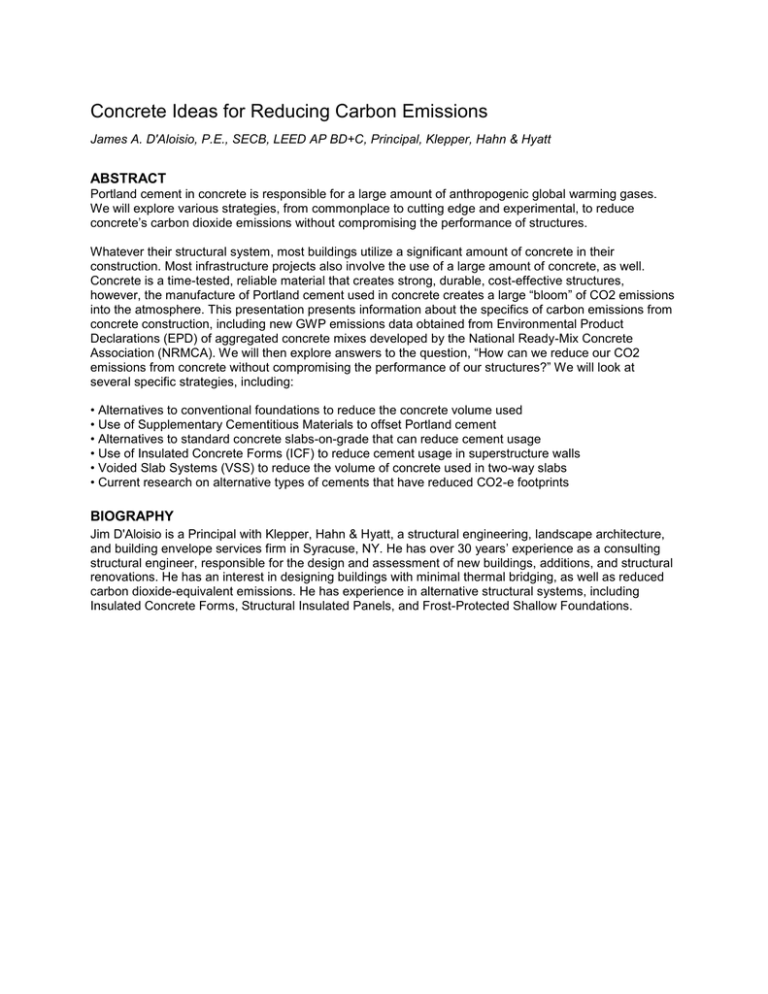Concrete Ideas for Reducing Carbon Emissions ABSTRACT
advertisement

Concrete Ideas for Reducing Carbon Emissions James A. D'Aloisio, P.E., SECB, LEED AP BD+C, Principal, Klepper, Hahn & Hyatt ABSTRACT Portland cement in concrete is responsible for a large amount of anthropogenic global warming gases. We will explore various strategies, from commonplace to cutting edge and experimental, to reduce concrete’s carbon dioxide emissions without compromising the performance of structures. Whatever their structural system, most buildings utilize a significant amount of concrete in their construction. Most infrastructure projects also involve the use of a large amount of concrete, as well. Concrete is a time-tested, reliable material that creates strong, durable, cost-effective structures, however, the manufacture of Portland cement used in concrete creates a large “bloom” of CO2 emissions into the atmosphere. This presentation presents information about the specifics of carbon emissions from concrete construction, including new GWP emissions data obtained from Environmental Product Declarations (EPD) of aggregated concrete mixes developed by the National Ready-Mix Concrete Association (NRMCA). We will then explore answers to the question, “How can we reduce our CO2 emissions from concrete without compromising the performance of our structures?” We will look at several specific strategies, including: • Alternatives to conventional foundations to reduce the concrete volume used • Use of Supplementary Cementitious Materials to offset Portland cement • Alternatives to standard concrete slabs-on-grade that can reduce cement usage • Use of Insulated Concrete Forms (ICF) to reduce cement usage in superstructure walls • Voided Slab Systems (VSS) to reduce the volume of concrete used in two-way slabs • Current research on alternative types of cements that have reduced CO2-e footprints BIOGRAPHY Jim D'Aloisio is a Principal with Klepper, Hahn & Hyatt, a structural engineering, landscape architecture, and building envelope services firm in Syracuse, NY. He has over 30 years’ experience as a consulting structural engineer, responsible for the design and assessment of new buildings, additions, and structural renovations. He has an interest in designing buildings with minimal thermal bridging, as well as reduced carbon dioxide-equivalent emissions. He has experience in alternative structural systems, including Insulated Concrete Forms, Structural Insulated Panels, and Frost-Protected Shallow Foundations.





